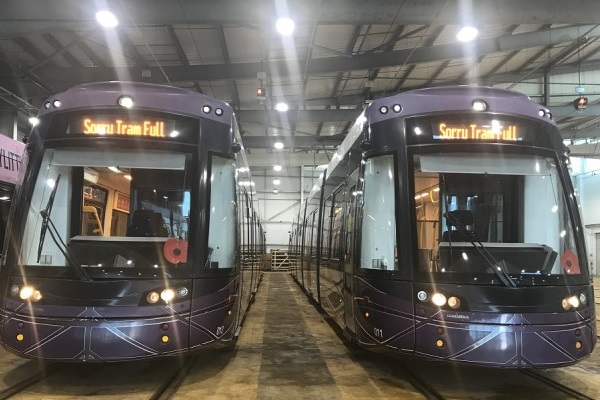Second on-board segregated area with dividing screen created for conductors.

Concern
Someone contacted us to report that reduced staffing levels were making it harder to socially distance on the Blackpool Tramway. They explained that the trams were running with only one guard on Monday to Thursday since resuming service, after suspension due to Covid-19, not two guards as before.
Managing passenger numbers had become difficult as a result. When the trams stopped to let people off, more people were getting on despite the sign saying ‘Sorry Tram Full’. Social distancing was often not possible on board, said the reporter, and this posed a health risk to staff and passengers.
They added that staff could face verbal abuse when reminding passengers of the maximum capacity rule or the need to socially distance. While acknowledging that Blackpool Transport Services had done a lot to mitigate the risk of Covid-19 spreading, the reporter asked for:
- either a return to pre-Covid-19 staffing levels, so that on all services Monday through Sunday there is one guard for each double door who can control the flow of passengers, or
- closing one set of double doors on trams with only one guard, so that passengers are less likely to crowd onto the tram.
Blackpool Transport Services' response
We are monitoring customer numbers daily and we are carrying less than 50% of our normal footfall. Therefore, having a three-person crew at all times is not viable. We have implemented a three-person crew roster at busy periods, Fridays, Saturdays and Sundays. To further support our tram crews, we have employed Palladium Associates to manage our busy tram platforms. This includes controlling the number of people on the platform and communicating with the conductors to decide how many people to allow on to the tram. We have given serious consideration to both of the recommendations given in this report.
Although we cannot put into place point one, we trialled locking the second set of double doors over four days on three different trams in early October. Following the trial, we have received feedback from 17 members of staff.
The main points from the feedback were:
- Having only one set of doors in operation reduced wheelchair space capacity.
- Boarding and alighting took longer.
- Customers were reluctant to move along the tram, causing congestion.
- Conductors were having to work harder to get through the tram.
Therefore, and after consultation with the trade union, we decided not to go ahead with locking the second set of double doors. However, since the report, Blackpool has moved into tier three and our passenger footfall has dropped significantly. We believe that by following government guidance, sharing best practice with our light rail colleagues and listening to our employees, we have reduced any Covid-19 risk to as low as is reasonably practicable.
Our operational support team, employed to help control Covid-19, sanitise all trams before service and throughout the rest of the day. Customers must wear a face covering, unless exempt. This control measure has allowed us to reduce the two-metre social distancing guidance to one metre. The one-metre social distancing guidance can be reduced further if the customers are from the same household. When a tram reaches maximum capacity, drivers display the ‘tram full’ sign and report this to control. It is the tram crew that makes this decision.
Conductors have a segregated area behind the driver’s cab and with a dividing screen, which they can use at any time. We have also now installed a second segregated area on our trams, so there is one at either end of the tram. We understand that managing the number of customers is challenging and we do not expect our conductors to strictly enforce customer numbers. We do ask that conductors use tact and diplomacy to educate the customer so that they can travel safety.
Find out more
Tags
- Health and Wellbeing
- Tram and Light Rail
